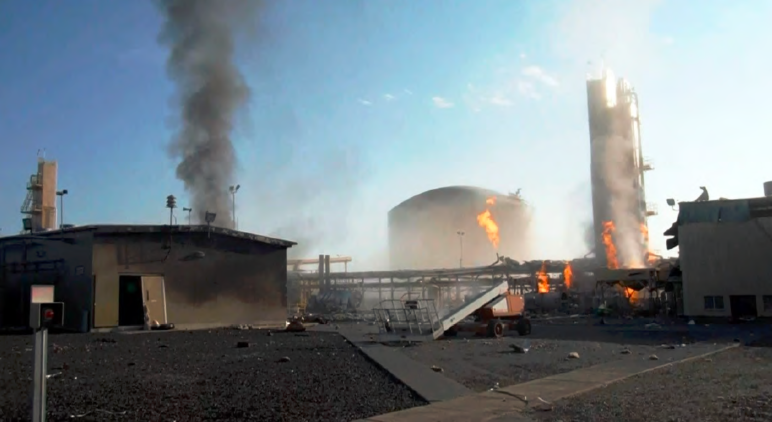By Stefanie Herweck

To listen to the companies that are proposing liquefied natural gas (LNG) export terminals in the Port of Brownsville, their industry is perfect.
It’s perfectly safe, it’s perfectly clean, and the proposed LNG industrial complex will be almost perfectly invisible from South Padre Island.
A lot of us are savvy enough consumers to know that when something sounds too good to be true, it probably is. But the companies go right on with their slick sales pitches instead of giving us straight talk about the way the proposed terminals would impact our communities.
Much of their messaging is designed to quiet fears by glossing over the safety risks, and this is done in a predictably superficial way. Most of their talking points end up sounding like, “There, there. LNG is safe. Everything’s going to be okay.”
Having serious discussions about the risk of vapor clouds and evacuation zones and the installation of emergency sirens–the reality of LNG–might scare people. But Rio Grande Valley residents are not children, and we have a right to know the truth.
One way the companies try to mislead us about the very real hazards of the industry is to focus narrowly on liquefied natural gas–liquid methane–as a substance, rather than the liquefaction and export operations the companies will actually be engaged in. Their Facebook memes and brochures proclaim “LNG Is Safe!” In fact, they say, LNG is not even flammable. And this is strictly true. Methane does not burn in liquid form. But just like gasoline, it starts to vaporize immediately in air. It’s the vapor that is flammable, and reliably so. After all, if natural gas didn’t burn, how could it be used it to cook food, heat homes, and generate electricity?
The companies also like to say you could pour LNG into a glass of water or tea, and the beverage would remain drinkable. Presumably, this is to show that in the event of an accidental spill LNG will not mix with water and will evaporate harmlessly. But they leave out the fact that at somewhere just warmer than minus 260 degrees LNG causes fatal freeze burns to any living thing it touches. In a spill on the water fish below the water line may remain safe, but what about dolphins and sea turtles that have to surface for air?
They also imply that “evaporation” means “to disappear,” when in fact spilled LNG would mix with air where methane would eventually reach a flammable concentration and could catch fire if it encounters any ignition source.
But it’s a trick, a sleight of hand, getting us to focus on the physical properties of liquid methane and acting as though natural gas is the whole story when it comes to safety. It’s a way of distracting us from what LNG safety experts say is the real danger of LNG export terminals.
Export terminals store, handle, process, transport and use large quantities of other heavier hydrocarbon fuels that are much more volatile and dangerous than the LNG itself.
These fuels include propane, ethylene, butane, and pentane. Some would be trucked in to use as freezing agents in the liquefaction process. Others would be refined out of the pipeline feeder gas, stored, and then trucked away to market. All of these fuels have a long history of causing accidental explosions. LNG safety experts Dr. Jerry Havens and Dr. James Venart have pointed to these heavy hydrocarbons as the main source of the hazards of LNG export terminals. The scientists are concerned that the presence of heavy hydrocarbons is not being taken more seriously by regulatory agencies. They stress that storage and use of such volatile fuels makes an explosion much more likely to happen in an LNG export terminal than in an LNG import terminal where such fuels are not present. And any explosion in an export terminal would take place in close proximity to a mind boggling amount of highly concentrated natural gas.
A typical LNG storage tank contains enough fuel to power something like 112,000 average U.S. homes for a year. Although the tanks are built solidly, recent research funded by the U.S. Pipeline and Hazardous Materials Safety Administration (PHMSA) found that 95 percent of storage tanks exposed to a hydrocarbon vapor cloud explosion were in fact set on fire. Because of the large quantity of gas, an LNG storage tank breached by fire could become an almost unimaginable catastrophe.
But even as PHMSA is taking a closer look at the safety of LNG export terminals, the LNG companies downplay the risk to our communities. They frequently point out that facilities like Boston Harbor’s Everett LNG Terminal have operated safely for years, while failing to mention that Everett LNG is an import terminal which does not store and handle the heavy hydrocarbons necessary in an export facility.
They show us the short list of accidents at LNG plants in the U.S, but they don’t explain that those events required the evacuation of communities up to two and even three miles away. Port Isabel would be within two miles of Texas LNG, the nearest proposed facility, and therefore almost certainly within the evacuation zone. They don’t discuss with us the need to install a public siren system in our communities to warn us of plant or tanker ship emergencies, and there is no mention of the need for armed security forces patrolling the ship channel, banks and jetties. Yet these things have been required for other communities near LNG facilities.
If Annova LNG, Texas LNG, and Rio Grande LNG want to build export terminals in our community they need to treat their would-be neighbors like adults. They need to be frank about the risks inherent in their operations. No more slick, misleading safety ads, no more sleight of hand statements.
If simple, straightforward honesty is too much for them, then they aren’t welcome here.